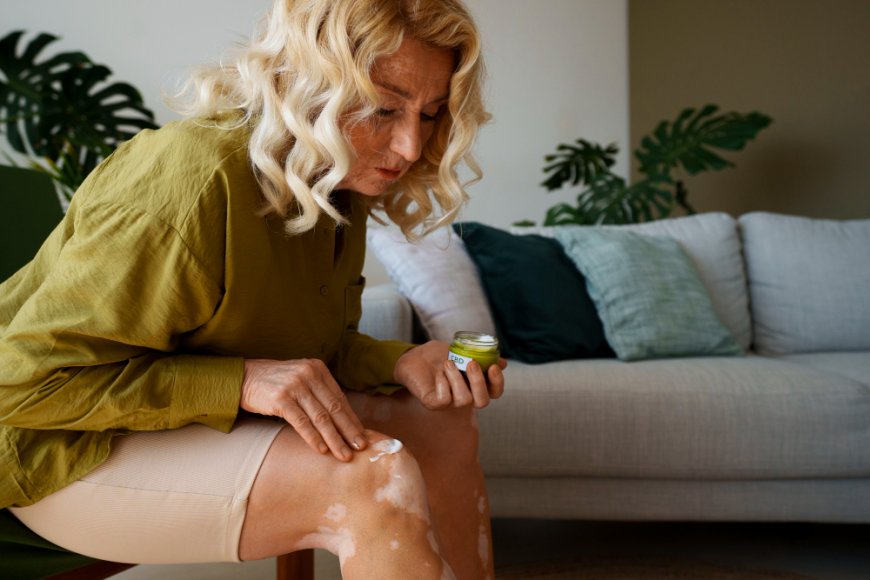How to Properly Care for a Denuded Wound at Home
Learn how to treat a denuded wound at home with this step-by-step guide. Discover proper cleansing, dressing, and infection prevention to support faster healing.

Denuded skin refers to the loss or stripping away of the top layer of the skin (epidermis), exposing raw, often inflamed tissue underneath. This type of wound can be incredibly painful and susceptible to infection if not properly managed. Whether caused by medical adhesive trauma, pressure injuries, moisture-associated skin damage (MASD), or other skin conditions, home care is essential to support healing and prevent complications. Understanding how to care for denuded skin at home is key to faster recovery, reduced discomfort, and healthy skin restoration.
In this comprehensive guide, we’ll walk you through everything you need to know about treating denuded wounds from the comfort of your home—safely, effectively, and with confidence.
What Is a Denuded Wound?
A denuded wound results when the outermost layer of skin is removed, leaving the underlying dermis exposed. It may appear shiny, red, weepy, or moist, and is often extremely tender to the touch. Unlike deep wounds that cut into the tissue or muscle, denuded wounds are superficial but present unique challenges due to their open, raw surface and the potential for ongoing irritation from fluids, friction, or adhesive use.
Common Causes of Denuded Skin Include:
-
Friction or shearing (bedridden patients, athletes)
-
Incontinence-associated dermatitis (IAD)
-
Medical adhesive-related skin injury (MARSI)
-
Thermal burns or scalding
-
Psoriasis or eczema flares
-
Radiation or chemotherapy side effects
Why At-Home Care Is Important
Caring for a denuded wound at home properly can make the difference between rapid recovery and a chronic, recurring problem. Since these wounds don’t always bleed or scab over, it’s easy to underestimate their seriousness. However, without attention, the skin can break down further, leading to infection, delayed healing, or even more extensive tissue loss.
Home care focuses on:
-
Promoting a moist (but not overly wet) healing environment
-
Protecting the wound from further trauma or contamination
-
Managing pain and discomfort
-
Monitoring for signs of infection
Step-by-Step Guide to Caring for a Denuded Wound at Home
1. Start With Clean Hands and a Clean Environment
Before doing anything to the wound, wash your hands thoroughly with soap and warm water for at least 20 seconds. If available, use disposable gloves to reduce contamination risk. Make sure your workspace is clean, well-lit, and has all necessary supplies ready.
2. Gently Cleanse the Wound
Cleaning removes debris, bacteria, and any built-up exudate (wound fluid). Use a wound cleanser, sterile saline solution, or lukewarm water. Do not use alcohol, hydrogen peroxide, or iodine unless directed by a healthcare provider, as these can damage new tissue.
How to Do It:
-
Pour or spray the cleanser gently over the wound
-
Blot gently with sterile gauze
-
Avoid scrubbing, which can cause additional trauma
3. Apply a Barrier or Healing Ointment
After cleaning, apply a thin layer of a skin barrier cream or healing ointment. These protect the wound from moisture, friction, and infection. For denuded wounds due to incontinence or moisture exposure, zinc oxide or dimethicone-based creams are recommended.
Effective Products:
-
Calmoseptine®
-
Cavilon™ Durable Barrier Cream
-
Aquaphor® Healing Ointment
-
Vaseline® Petroleum Jelly
Apply gently using clean fingertips or a cotton applicator, avoiding pressure.
4. Use the Right Dressing
Choosing the right wound dressing is essential. The goal is to maintain a moist healing environment while protecting the wound from bacteria and friction. Some wounds may require absorptive dressings, while others do better with hydrogels or silicone-based covers.
Dressing Types:
-
Hydrocolloid dressings: For moderately moist wounds
-
Foam dressings: For wounds with more exudate
-
Non-stick silicone dressings: For sensitive skin or adhesive-related injuries
-
Hydrogels: For dry wounds needing hydration
Dressings should be changed every 1–3 days or sooner if they become soiled or dislodged.
5. Avoid Adhesive Trauma
One of the biggest risks in managing denuded wounds is causing more damage during dressing removal. Use adhesive-free or low-adhesion products whenever possible. If using adhesive dressings, apply a protective barrier film (like Cavilon No Sting Barrier) around the wound to protect surrounding skin.
To remove dressings safely:
-
Loosen the edge slowly
-
Pull back gently at a low angle
-
Use adhesive remover wipes if available
Additional Tips for Faster Healing
Stay Hydrated and Eat Nutritiously
Good hydration and nutrition help your skin regenerate. Ensure you’re drinking plenty of water and eating foods rich in protein, vitamin C, and zinc, all crucial for skin healing.
Keep the Wound Site Elevated (When Applicable)
If the denuded area is on a limb, elevating it can reduce swelling and improve circulation to speed healing.
Wear Loose, Breathable Clothing
Tight clothing or rough fabrics can rub against the wound and slow healing. Opt for soft, breathable cotton and loose fits.
Avoid Prolonged Moisture Exposure
If your wound was caused by moisture (e.g., incontinence), ensure the area is kept dry and clean. Use absorbent pads or breathable diapers, and change them frequently.
Signs of Healing vs. Signs of Infection
It's important to recognize whether your wound is healing normally or becoming problematic.
Healing Signs:
-
Reduced redness and tenderness
-
Less exudate (fluid)
-
Appearance of new skin (pink or slightly shiny)
-
Scabbing (in later stages)
Warning Signs of Infection:
-
Increased redness or warmth
-
Swelling or pus
-
Foul odor
-
Fever or chills
-
Worsening pain
If you notice any of these symptoms, seek professional medical care promptly.
When to See a Specialist
While many minor denuded wounds can be managed at home, some situations require professional intervention. Contact a healthcare provider if:
-
The wound is large, spreading, or deep
-
There are signs of infection
-
Healing is slow or stagnating after a week
-
You have underlying conditions like diabetes or poor circulation
FAQs About Denuded Skin Care
Can I shower with a denuded wound?
Yes, but protect the wound with a waterproof dressing or shield. After showering, remove the dressing, gently pat the area dry, and reapply a clean dressing.
Is it okay to use antibiotic ointments like Neosporin?
Over-the-counter antibiotic ointments can help in some cases, but they may cause allergic reactions in sensitive skin. Use only if directed by your provider.
How long does a denuded wound take to heal?
Superficial denuded wounds can begin to heal in 3–7 days. Deeper or more complicated wounds may take several weeks. Good wound care shortens recovery time.
Final Thoughts
Caring for a denuded wound at home may seem daunting at first, but with the right tools, techniques, and consistency, it is absolutely manageable. By focusing on gentle cleansing, moisture balance, protective barriers, and attentive monitoring, you can significantly reduce the risk of infection and speed up the skin’s natural healing process.
Still, some wounds require more than basic home care. If your wound isn’t healing, is worsening, or is causing significant pain, don’t hesitate to seek professional help. For those living in Southern California, expert help is close at hand. Consider scheduling a consultation with the Specialist Wound Care Center in LA, California to receive advanced care from certified professionals who specialize in treating even the most stubborn skin wounds.
What's Your Reaction?
 Like
0
Like
0
 Dislike
0
Dislike
0
 Love
0
Love
0
 Funny
0
Funny
0
 Angry
0
Angry
0
 Sad
0
Sad
0
 Wow
0
Wow
0





































